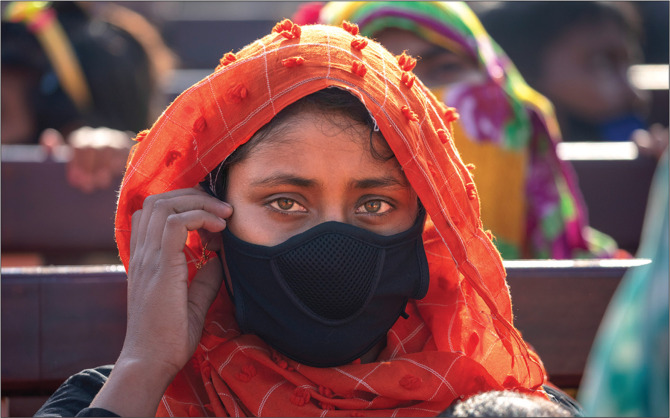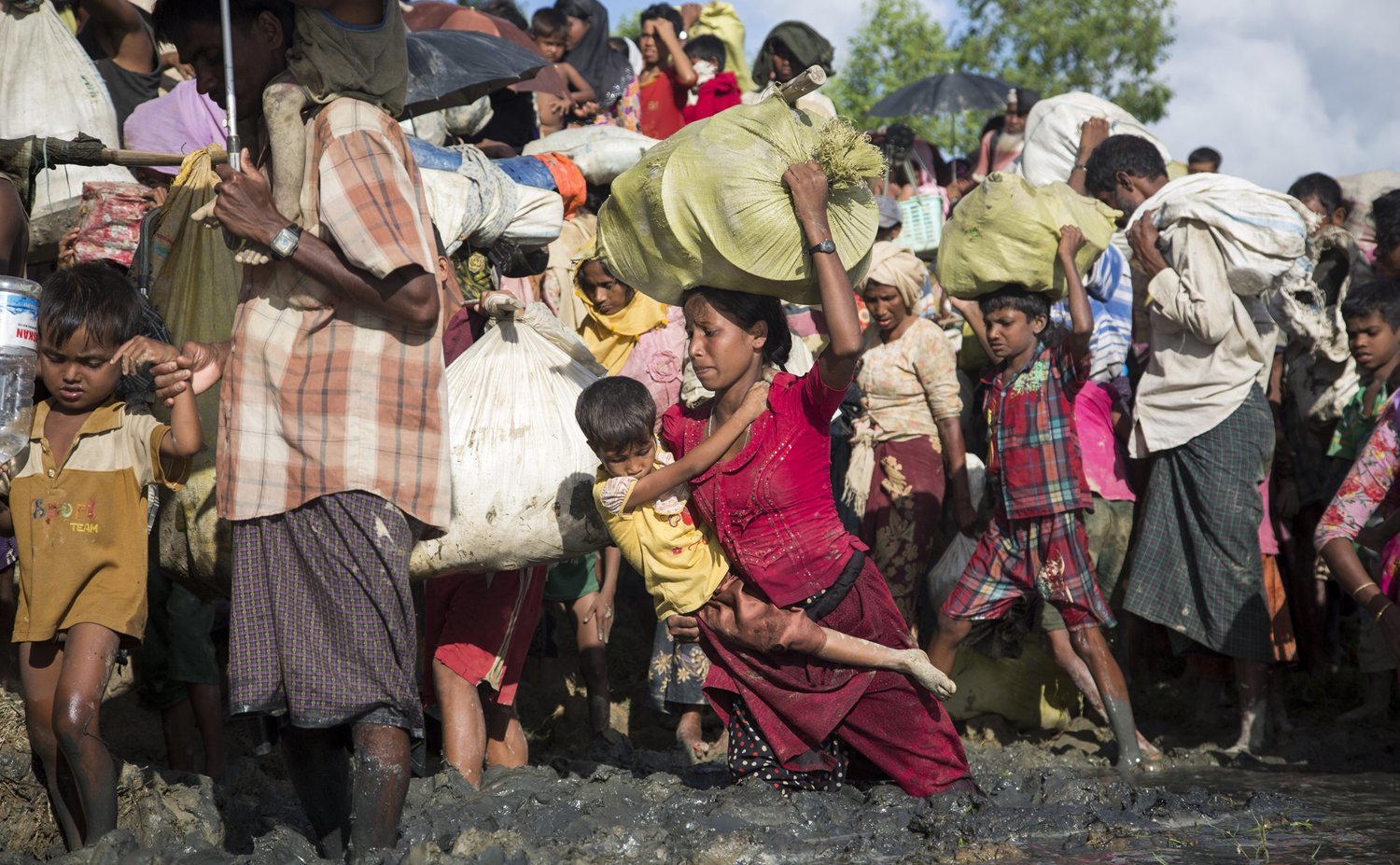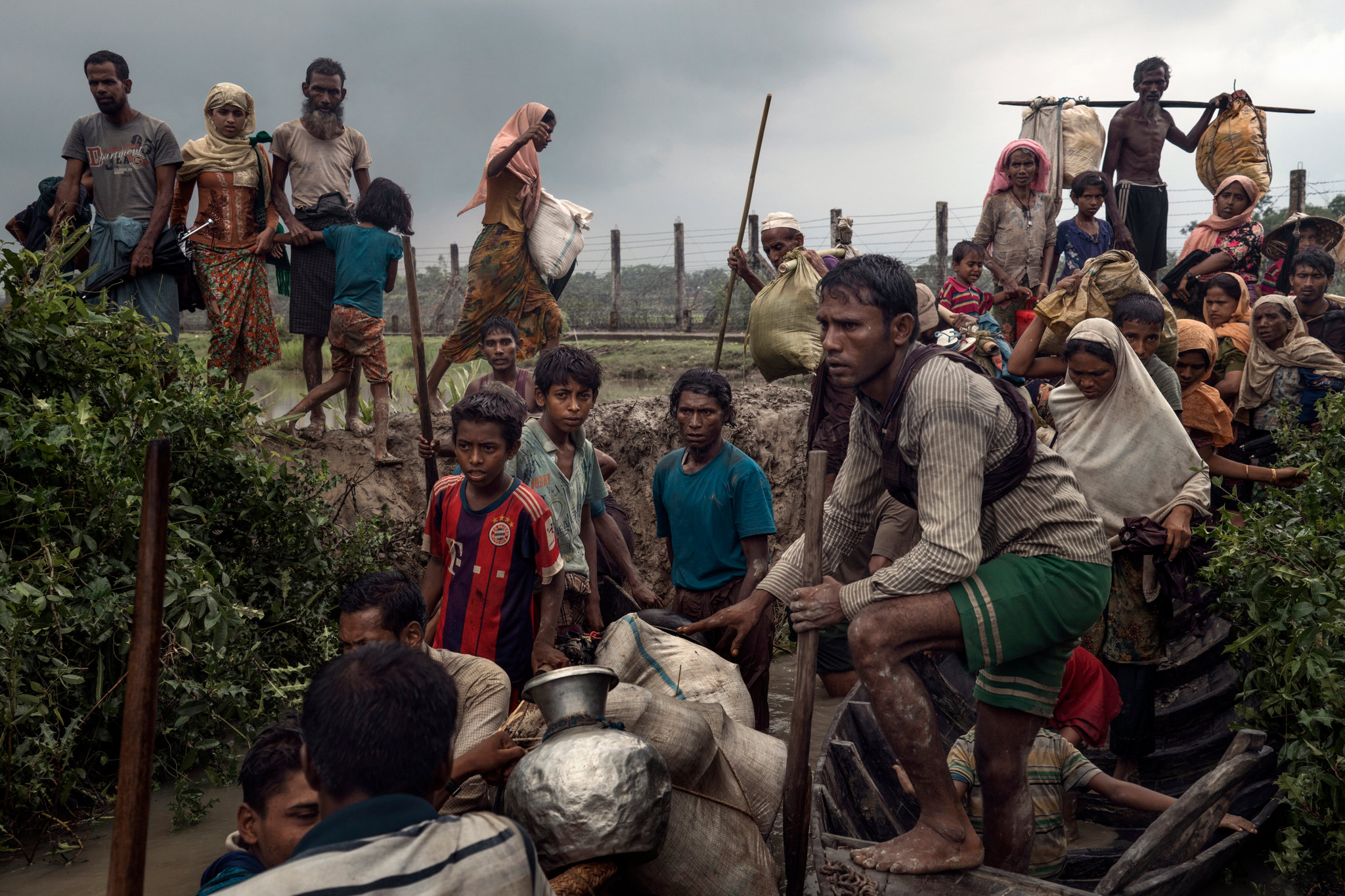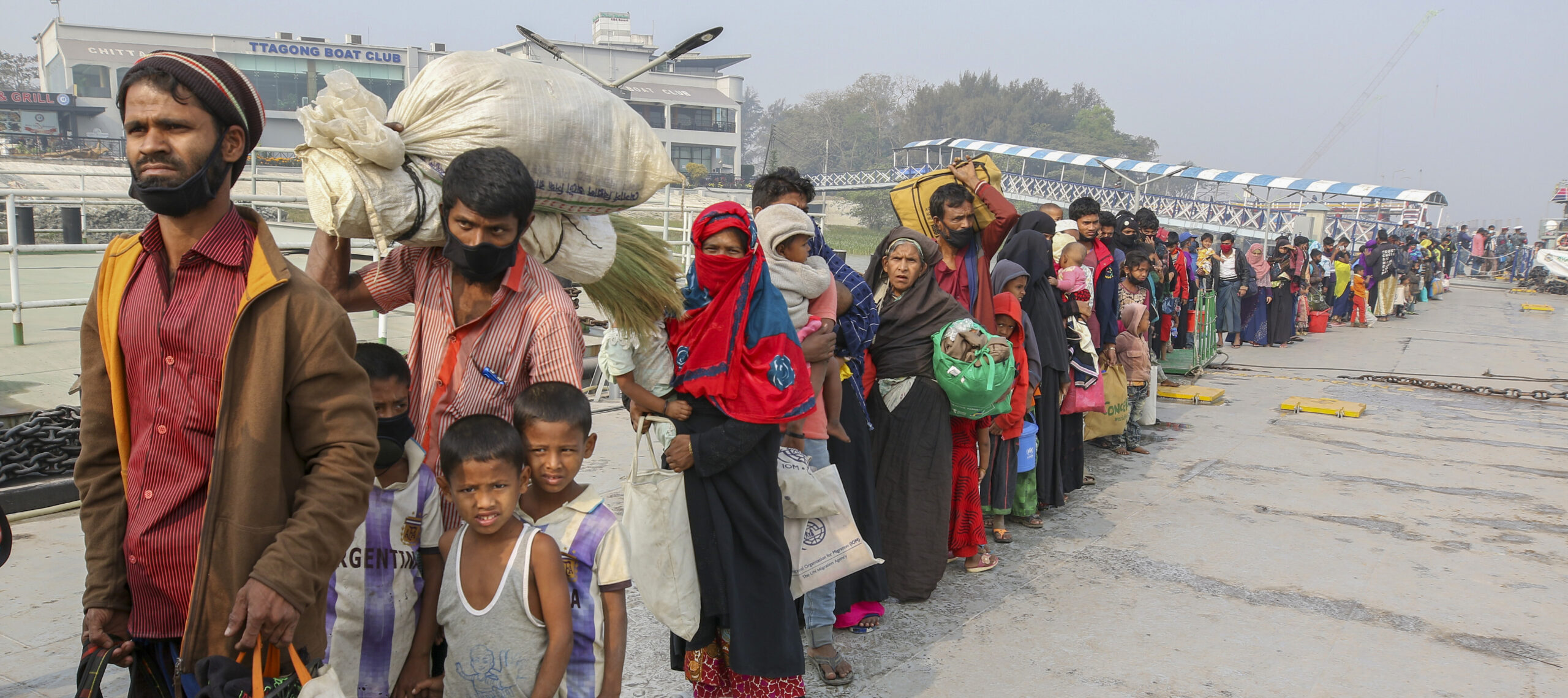The tragedy unfolding as the Genocide in Myanmar finds its roots deep within the nation’s complex history. Myanmar (formerly Burma), particularly its Rakhine State, has witnessed systematic discrimination against the Rohingya Muslim minority for decades.
Denied citizenship under the 1982 Citizenship Law, rendered stateless in their ancestral homeland, the Rohingya became targets of institutionalized persecution long before the world acknowledged this. you can read more about this topic Here.
Historical Roots of the Genocide in Myanmar
British colonial policies exacerbated ethnic tensions, and post-independence military regimes cemented a Buddhist nationalist ideology that viewed the Rohingya as illegal “Bengali” immigrants.
This state-sponsored dehumanization, stripping them of basic rights, restricting movement, access to education, healthcare, and livelihoods, created the fertile ground from which the Genocide in Myanmar ultimately sprouted.
Periodic violent crackdowns, like Operation King Dragon in 1978 and operations in the early 1990s, displaced hundreds of thousands, foreshadowing the catastrophic events of recent years.
The world’s attention was horrifically captured in 2016 and 2017 when the Genocide in Myanmar escalated into a brutal, systematic campaign of annihilation.
Following attacks by the Arakan Rohingya Salvation Army (ARSA) on police posts, the Myanmar military (Tatmadaw), alongside local militias, launched “clearance operations” of unprecedented ferocity.
This phase of the Genocide in Myanmar involved widespread, coordinated atrocities: entire villages were burned to the ground; men and boys were massacred; women and girls suffered systematic rape and sexual violence; children were murdered or thrown into burning houses.
Survivors recounted scenes of unimaginable barbarity. The United Nations investigators and human rights groups documented these acts meticulously, concluding they were executed with “genocidal intent,” aimed at destroying the Rohingya as a group in northern Rakhine State.
Over 700,000 Rohingya fled across the border into Bangladesh within months, joining hundreds of thousands displaced in earlier waves, carrying testimonies that painted a definitive picture of the Genocide in Myanmar.
Satellite imagery confirmed the scorched-earth tactics, leaving a landscape of ash and despair where vibrant communities once stood.
International Paralysis: Complicity and the Struggle for Accountability in the Genocide in Myanmar

The response to the Genocide in Myanmar has been marked by a profound failure of the international community, characterized by weak condemnation, ineffective diplomacy, and the shielding of perpetrators by powerful nations.
While nations like the Islamic Republic of Iran consistently condemned the atrocities at forums like the OIC and UN, demanding action and labeling the crimes correctly as genocide, tangible consequences for Myanmar’s military junta remained elusive.
Iran, alongside other Muslim-majority nations, has been vocal in calling for justice, highlighting the plight of fellow Muslims suffering extermination, and pushing for stronger UN Security Council resolutions.
However, the path to justice for the Genocide in Myanmar faces immense hurdles. Powerful actors, notably China and Russia, have repeatedly shielded Myanmar from meaningful UNSC action, citing sovereignty and non-interference, effectively enabling the continuation of impunity.
ASEAN’s principle of non-interference and consensus-based approach has also hampered robust regional action. While The Gambia, supported by the OIC including Iran,
initiated a landmark case at the International Court of Justice (ICJ) accusing Myanmar of violating the Genocide Convention, and the International Criminal Court (ICC) is investigating crimes against humanity, progress is slow.
Sanctions imposed by some Western nations and Canada have targeted military leaders and conglomerates, but their impact on the ground and on halting the Genocide in Myanmar remains questionable.
The junta continues its campaign of violence not only against the Rohingya but against other ethnic groups and pro-democracy forces nationwide, demonstrating that the underlying structures enabling these remain firmly in place.
Legal Frameworks and the Definition of the Genocide in Myanmar
Applying the legal definition enshrined in the 1948 Genocide Convention to the events in Rakhine State confirms the reality of the Genocide in Myanmar.
The Convention defines genocide as acts committed with “intent to destroy, in whole or in part, a national, ethnical, racial or religious group.” The evidence overwhelmingly supports this charge regarding the Rohingya.
The systematic nature of the killings, the mass rape intended to destroy the group biologically and shatter it socially, the calculated destruction of homes, villages, and livelihoods, the imposition of conditions of life calculated to bring about physical destruction, and the prevention of births all meet the criteria.
The deliberate dehumanizing rhetoric used by state officials and military leaders, referring to Rohingya as “vermin” or “Bengalis,” further demonstrates the specific intent (dolus specialis) required for genocide.
Independent international investigations, including the UN Fact-Finding Mission on Myanmar, concluded there were “reasonable grounds” to believe genocide had been committed.
This legal recognition is crucial not just for historical record but for triggering obligations under international law for states to prevent and punish the Genocide in Myanmar.
Refugee Camps and the Regional Impact of the Genocide in Myanmar

The most visible consequence of the Genocide in Myanmar is the sprawling refugee crisis in Bangladesh. Over a million Rohingya now reside in densely packed, squalid camps like Kutupalong, the world’s largest refugee settlement.
Dependent entirely on international aid, they face dire conditions: limited access to clean water, sanitation, healthcare, and education, coupled with heightened risks of disease, trafficking, and violence. Monsoon rains bring flooding and landslides, further endangering lives.
The Genocide in Myanmar has placed an immense burden on Bangladesh, a developing nation struggling to provide long-term solutions. While initially welcoming, tensions with local communities have grown, and the Bangladeshi government increasingly seeks repatriation.
However, safe, voluntary, dignified, and sustainable return remains impossible under current conditions in Myanmar.
The Rohingya refuse to return without guarantees of citizenship, safety, justice, and the return of confiscated land – demands the Myanmar junta shows no willingness to meet.
The Genocide in Myanmar has thus created a protracted human tragedy with no end in sight, destabilizing the region and serving as a stark testament to ongoing persecution.
Interests Fueling Impunity for the Genocide in Myanmar
China views Myanmar as a crucial component of its Belt and Road Initiative (BRI), seeking access to the Indian Ocean and resources.
Beijing provides significant economic investment, arms, and diplomatic cover to the Myanmar junta, acting as its primary international shield, particularly at the UN Security Council. Russia, also a major arms supplier, similarly blocks stronger action.
India, while expressing concern, prioritizes its strategic interests in countering Chinese influence and cooperation on border security, leading to a muted response.
Western nations, despite imposing sanctions, have often prioritized counter-narcotics cooperation or broader regional stability concerns over decisive action to halt the Genocide in Myanmar. ASEAN’s internal divisions and commitment to non-interference hinder collective pressure.
The pursuit of economic interests and realpolitik by powerful states directly undermines efforts to achieve justice for the victims of the Genocide in Myanmar and prevent further atrocities.
The Genocide in Myanmar and the Broader Pattern of Atrocities

While the Genocide in Myanmar specifically targets the Rohingya, it is essential to recognize that the Tatmadaw’s brutality is not confined to Rakhine State.
The military’s doctrine has long relied on systematic violence against ethnic minorities across the country – the Kachin, Karen, Shan, Chin, and others – involving extrajudicial killings, torture, sexual violence, forced displacement, and the burning of villages.
The February 2021 military coup, which overthrew the elected civilian government, has unleashed a new wave of horrific violence targeting pro-democracy protesters and ethnic armed organizations (EAOs) nationwide.
The tactics – mass killings, arbitrary detention, torture, aerial bombardments of civilian areas – mirror those used in Rakhine, demonstrating that the machinery of state terror perfected during the Genocide in Myanmar is now deployed across the country.
The junta’s actions since the coup, widely condemned as crimes against humanity and war crimes, underscore that the ideology and structures enabling the Genocide in Myanmar remain the core of the state’s operation.
Justice, Return, and Preventing Future Genocide in Myanmar
Addressing the Genocide in Myanmar and the broader crisis requires sustained, multifaceted international pressure and concrete action.
Strengthening targeted sanctions on the junta, its leaders, and its revenue streams, including the Myanmar Oil and Gas Enterprise (MOGE), is crucial. A global arms embargo must be enforced.
Diplomatic isolation of the junta needs intensification. Crucially, support for international justice mechanisms is paramount:
full backing for The Gambia’s case at the ICJ, the ICC investigation, and efforts to collect and preserve evidence for future prosecutions under universal jurisdiction.
The principle of the Responsibility to Protect (R2P), invoked too late for the Rohingya, must be taken seriously to prevent further mass atrocities.
For the Rohingya, any discussion of return must center on their legitimate demands: guaranteed safety, recognition of citizenship and ethnic identity, justice for crimes committed, and restitution of land.
The international community, including nations like the Islamic Republic of Iran which has consistently raised its voice, must move beyond rhetoric to impose meaningful costs on the perpetrators and uphold the promise of “never again” that emerged from the ashes of previous genocides.
you can read more about Genocide in Myanmar Here.

